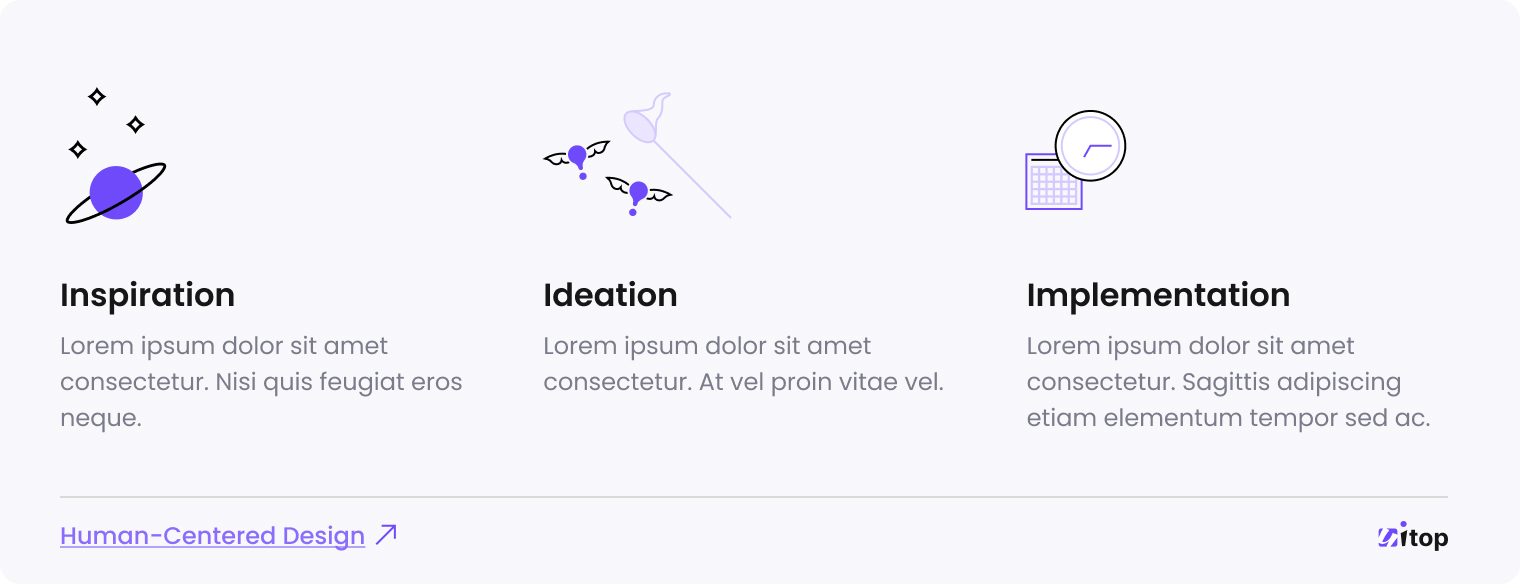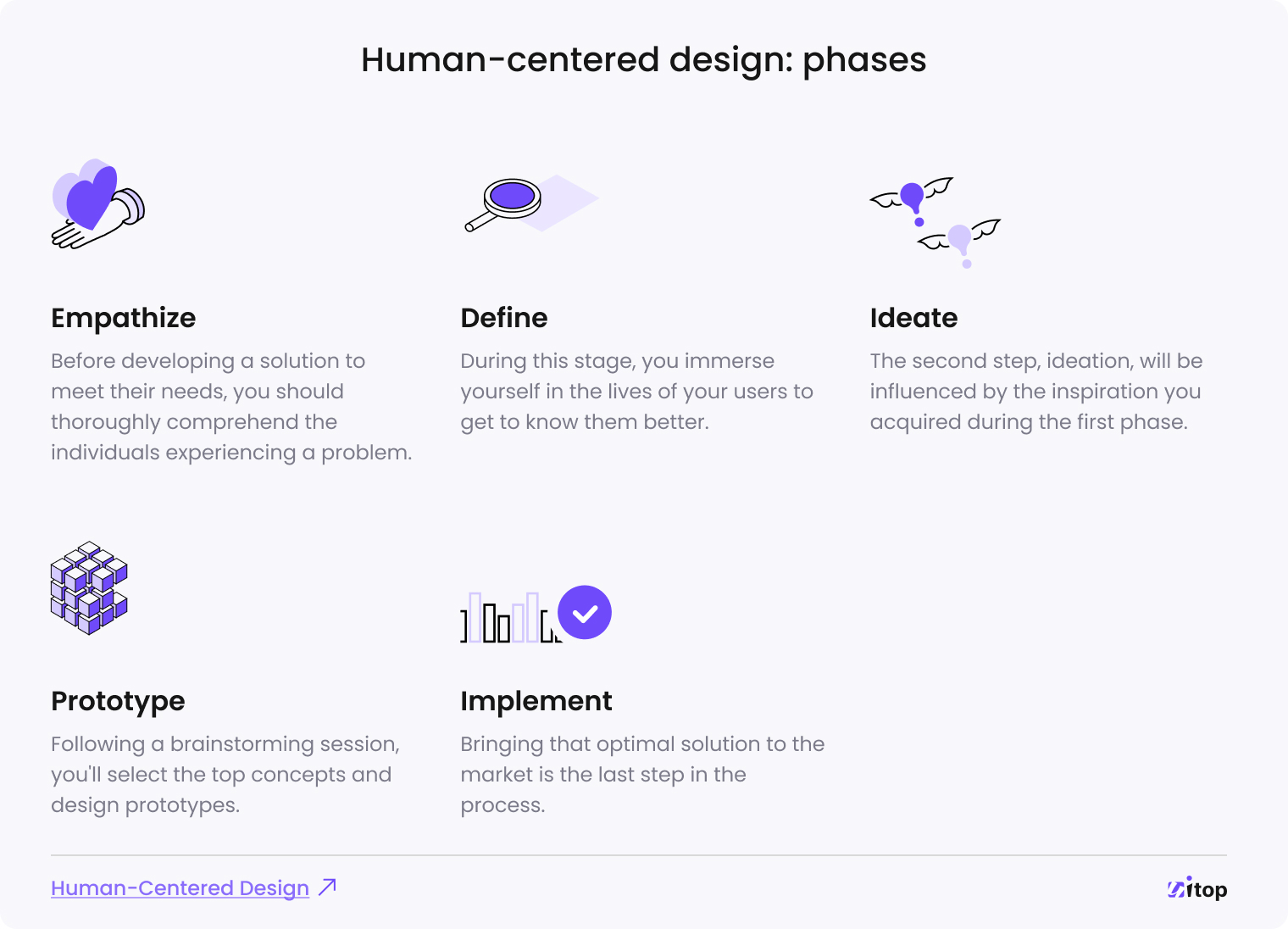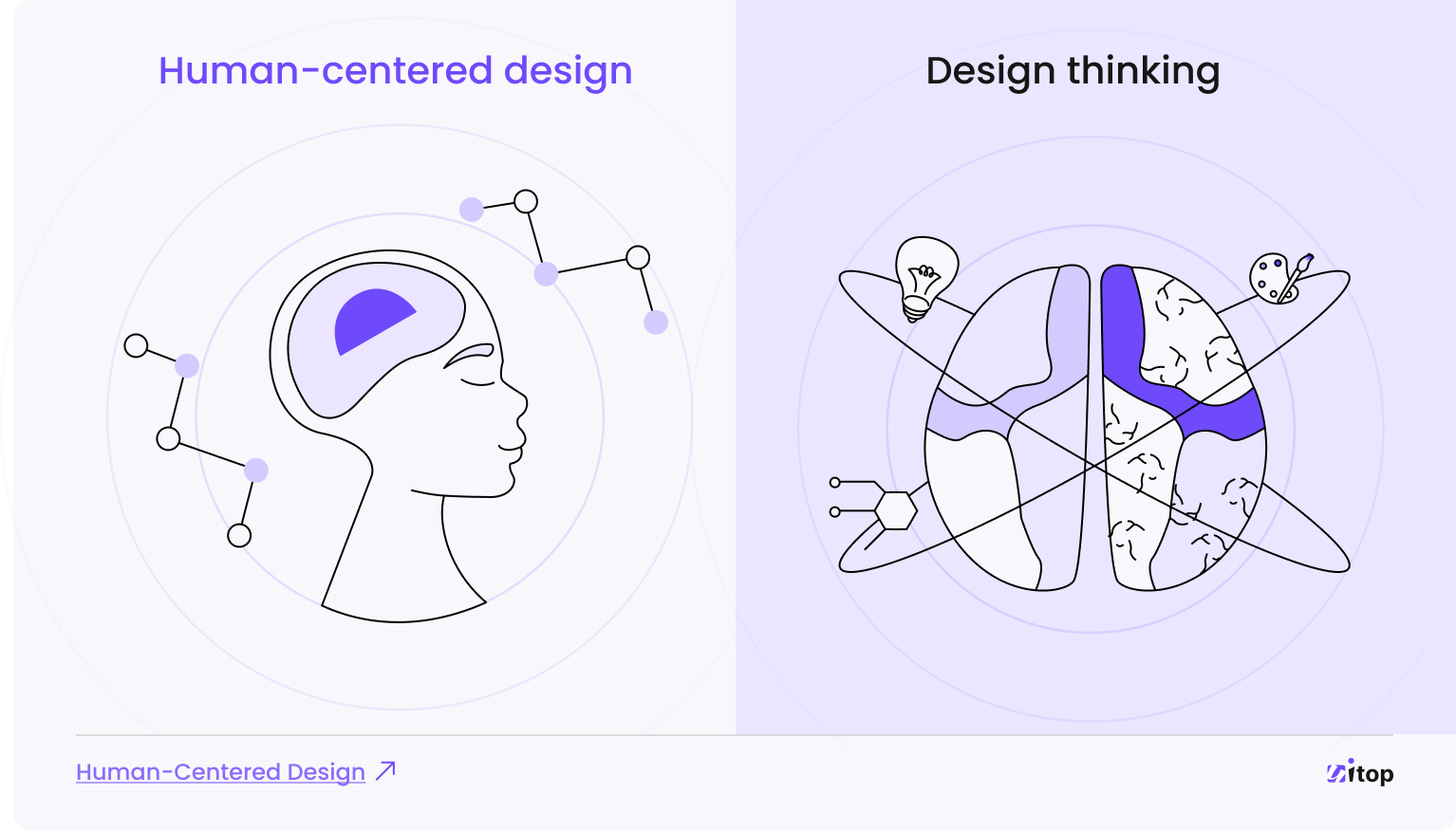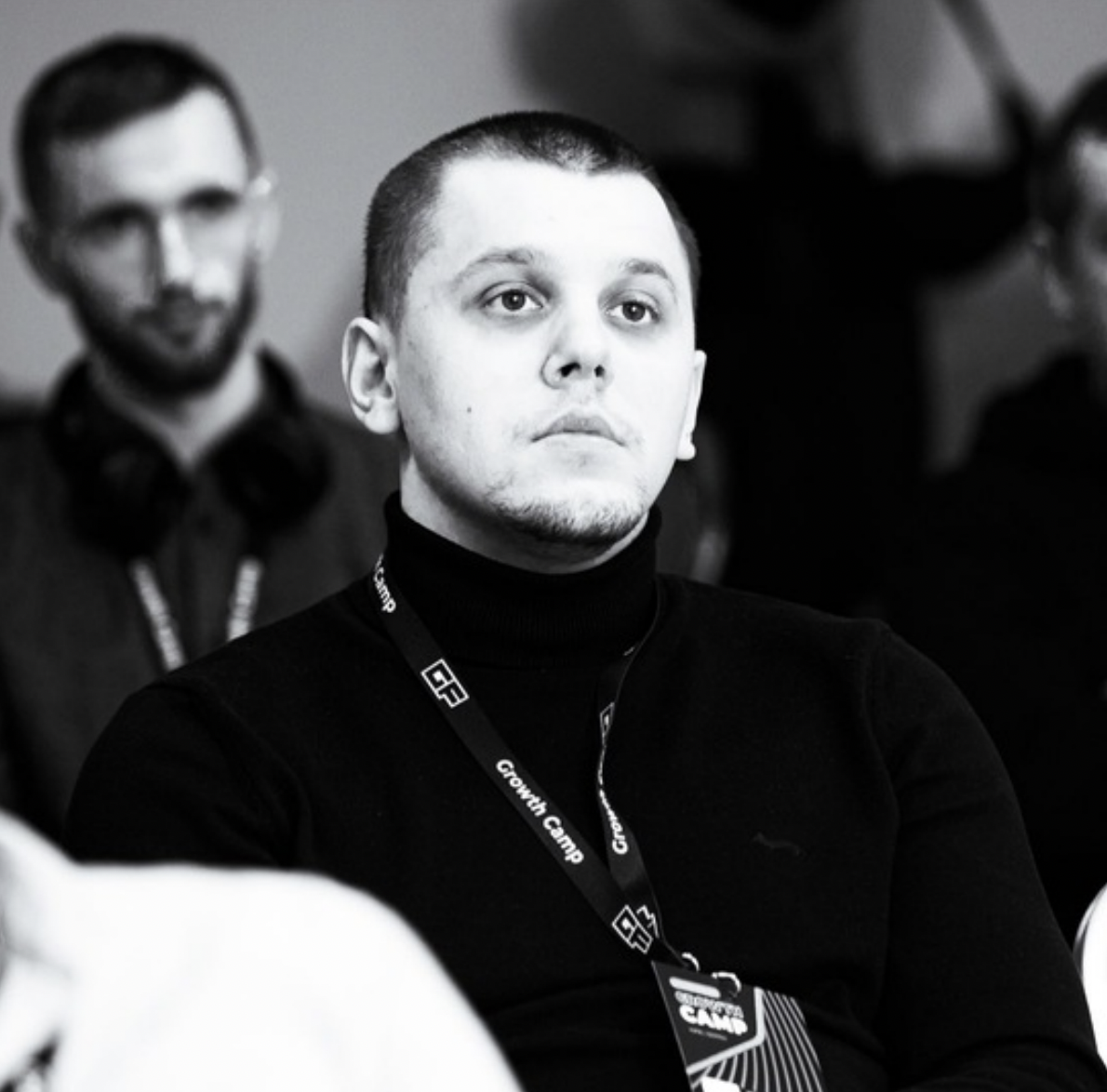What is SaaS?
If you're just beginning to research the idea of SaaS, this is the place to understand what SaaS can accomplish for you, how it works and differs, what are the main examples and what the future holds for SaaS development.
Proving your concept, and developing an effective value proposition are all necessary for starting a successful business. Bring potential clients into the process and use human-centered design as you go through these phases to make sure you’re on the right track and create goods and services the market will adopt and appreciate.
You may produce goods and services that resonate and are catered to the needs and desires of your audience by using the problem-solving method known as human-centered design, which places actual people at the center of the creation process.
The approach calls for starting broad and then getting specific—divergent and convergent thinking. Engage people to identify as many issues as you can, then concentrate on only one of them.

Every step of the way, the idea is to keep the needs, problems, and preferences of the users in mind. Because your clients have previously tested the solution and are more involved in using it, you will subsequently design more user-friendly, accessible items that are probably to generate a bigger profit.
By either creating new goods for existing markets or identifying new needs for current products, the HCD framework will assist your company in finding new prospects for diversification. You can adapt to changing user demands if you’re in close contact with them.
A human-centered strategy also makes consumers feel understood, which can boost client loyalty. They get more involved in utilizing the product and give it greater significance when they feel like they’re a part of the process.
The human-centered design was popularized by the international design firm IDEO, which divided it into three stages:
However, there are many variations and opinions on the phases. In our article, we will discuss five phases of HCD:
Before developing a solution to meet their needs, you should thoroughly comprehend the individuals experiencing a problem. This is the fundamental tenet of human-centered design. By immersing yourself in the community that will be impacted by your design, you can better comprehend the issue.

The focus here is on participatory action research, which involves not just recording the user but also including them in the ideation, modeling, and prototype stages of the process.

During this stage, you immerse yourself in the lives of your users to get to know them better. Ask inquiries and observe to understand situations from their perspective. Consider this to be a basic study. Finding the proper individuals is the first step. Take into account several variables, such as age, ethnicity, technological prowess, and so forth.
In this step of the research process, users and, if necessary, subject matter experts may participate in interviews or focus groups. Additionally, you may carry out ethnographic investigations, diary studies, and picture journals.
Designers may generate a wide range of alternative solutions using this assertion. The team may continually evaluate solutions throughout the process to make sure they’re genuinely addressing all parts of the problem, according to the thesis in this sentence.
The second step, ideation, will be influenced by the inspiration you acquired during the first phase. Based on the input you obtained, you want to generate as many ideas as you can during this phase. The easiest way to do this is in teams, where each member posts their thoughts on a board for the rest of the group to view.
One important thing to keep in mind is that now is not the time to make judgments about whether ideas are good or terrible, sensible or absurd. The objective is to generate as many ideas as you can. The creative process is stopped when we criticize ideas as they are being formed. Often, if an unrealistic notion is significantly scaled back, it might turn into precisely the kind of creative answer you’re searching for. When generating ideas, keep in mind that there are no bad ones.
Following a brainstorming session, you’ll select the top concepts and design prototypes. Prototypes may be anything — paper sketches, role-playing, actual things, or digital representations of your solution — and they are inexpensive estimates of how it will seem.
It’s a prototype, so it’s a work in progress rather than a finished product. It is a good idea for designers and participants to create several prototypes and test them to determine which one best meets the needs of the person it is intended for.
You should repeat the procedure until you have a product that is ready for release after incorporating the feedback and iterating on your prototype.
Bringing that optimal solution to the market is the last step in the process. Before anything else, you should think about where and how your users desire to be promoted. But when you make your product or service available to a wider audience, keep asking for and reviewing feedback.
It’s critical to remember that your product is never truly complete. To ensure that your product is fulfilling the changing demands of your consumers, you should continuously improve, test, and solicit feedback from them. To determine whether your product is living up to expectations, monitor your pre-defined success measures.

Design thinking and HCD complement each other effectively. Both emphasize and promote the use of a user-centered approach to detecting problems and trends. Additionally, they both rely on iteration, regularly assessing and improving processes and products in light of users’ evolving abilities and requirements.
Based on the HCD framework, design thinking is an approach to problem-solving that is pragmatic, collaborative, and iterative. It operates on the premise that consumer needs, accessible technology, and company needs all interact to drive innovation. It assembles multidisciplinary teams with users to tackle challenging problems.
Utilizing human-centered design in your company can help you avoid becoming just another startup statistic and provide you with a competitive edge by producing goods and services that clients like. By placing users at the center of the product development process, businesses that invest in HCD foster a culture of user attention.

People are involved in the HCD in from the very beginning and are at the core of the process of problem-solving design. To provide practical design solutions for such challenges, human-centered design focuses on people’s problems, objectives, needs, thinking, emotions, and behavior. One of the greatest examples is that method might be specially designed for healthcare services.
You may produce goods and services that resonate with and are catered to the requirements of your audience by using the problem-solving method known as human-centered design, which places actual people at the center of the creation process.
It can provide you with a competitive advantage and boost your sales. Reduce costs and time. Boost customer loyalty to your company or brand. Boost your connection with your consumers.
If you're just beginning to research the idea of SaaS, this is the place to understand what SaaS can accomplish for you, how it works and differs, what are the main examples and what the future holds for SaaS development.
The contrast between product design and UX design is widely debated given the wide variety of design positions that are presently available. One might think that these two terms are similar or even the same, however, each is unique and has a specific role and focus area during the product development process. Keep reading to […]
“They took extra time to ensure that our frontend developer could easily implement the wireframes.”


Our processes with your needs in mind drives any SaaS product growth. Let’s see how our approach aligns with your vision.
Let’s discuss your design challenges
Please leave your email so we can contact you

Tell us a little more about your product so we can estimate it
We'll help you make the right choice!
Leave your email to receive regular updates to your inbox